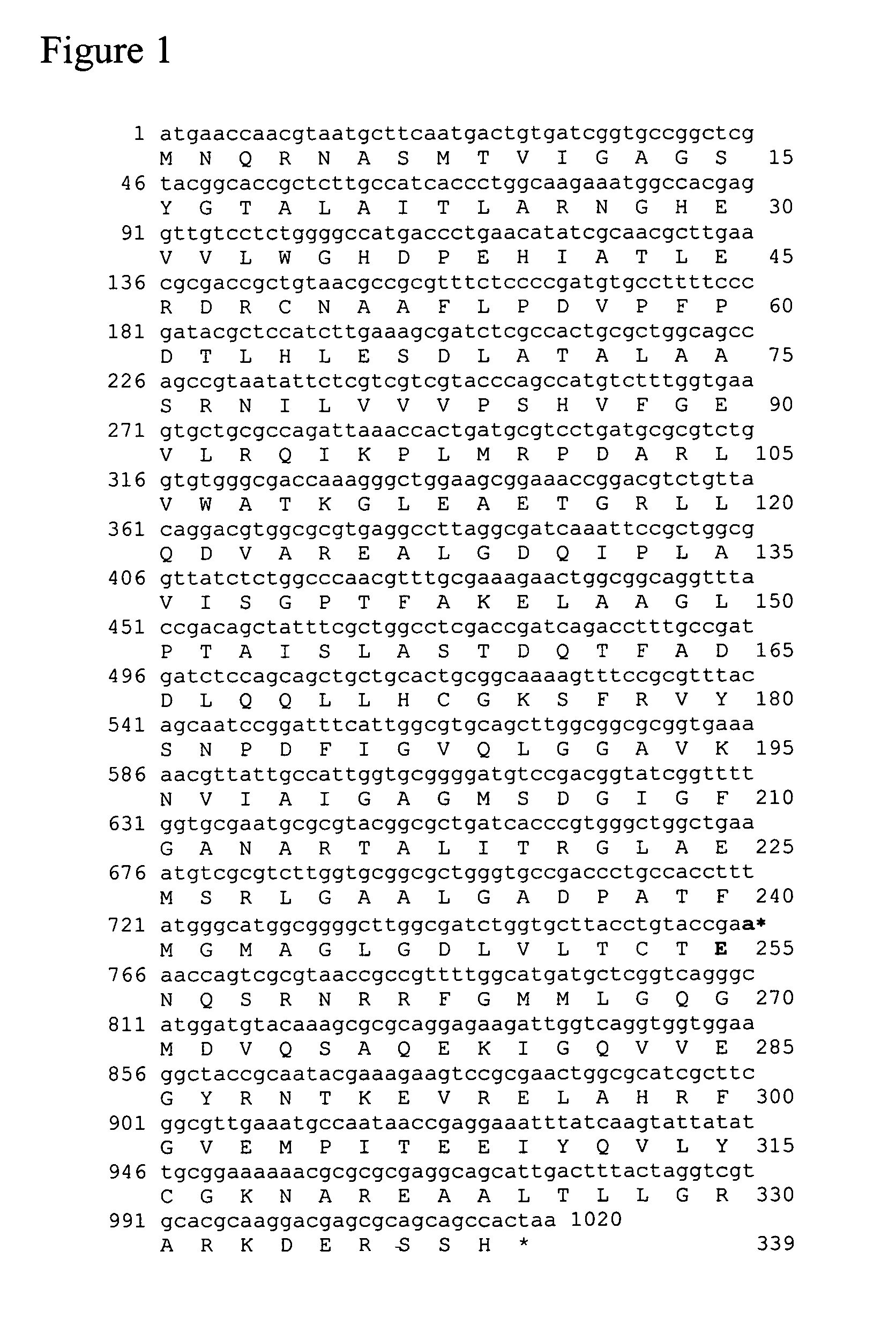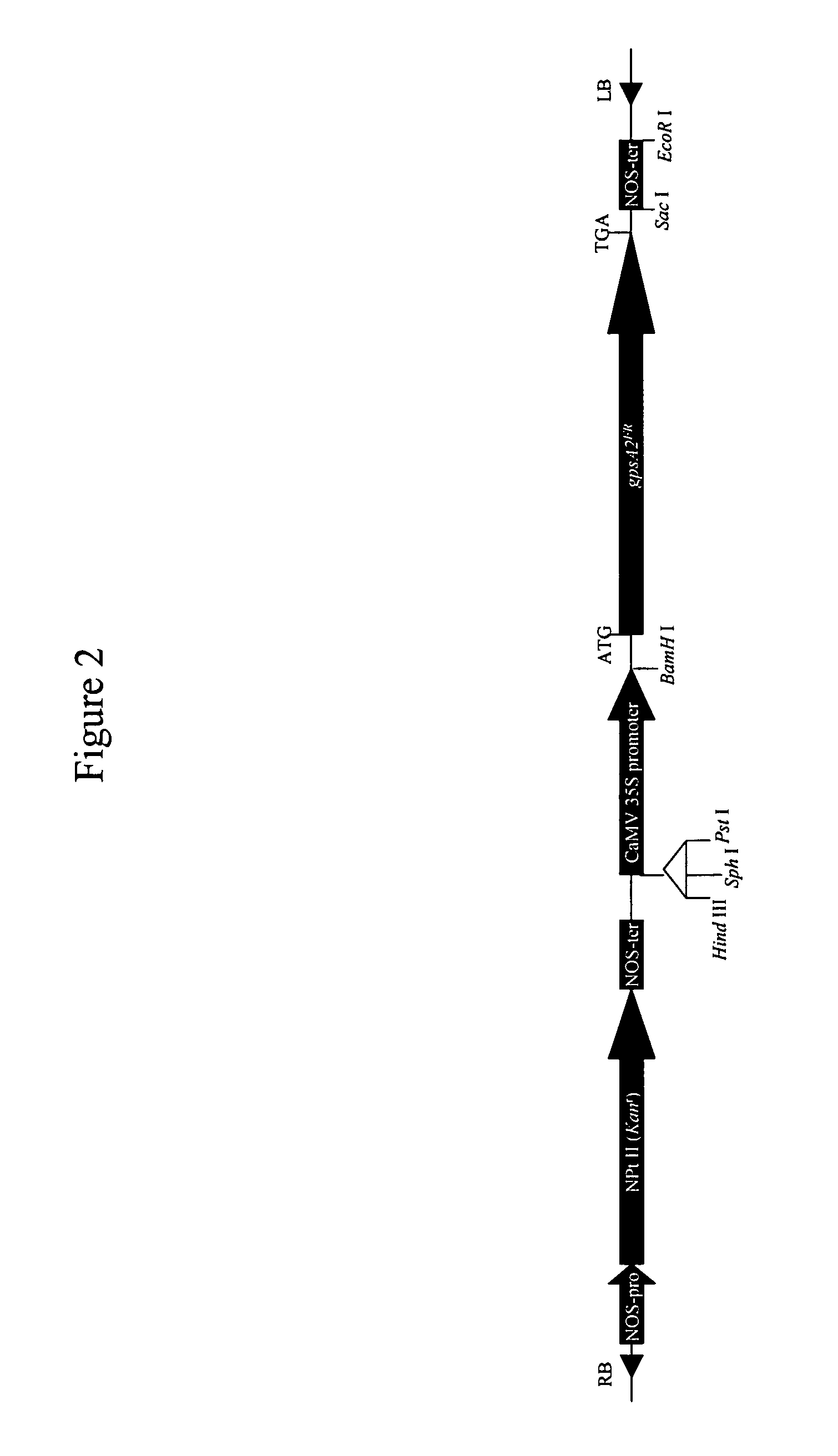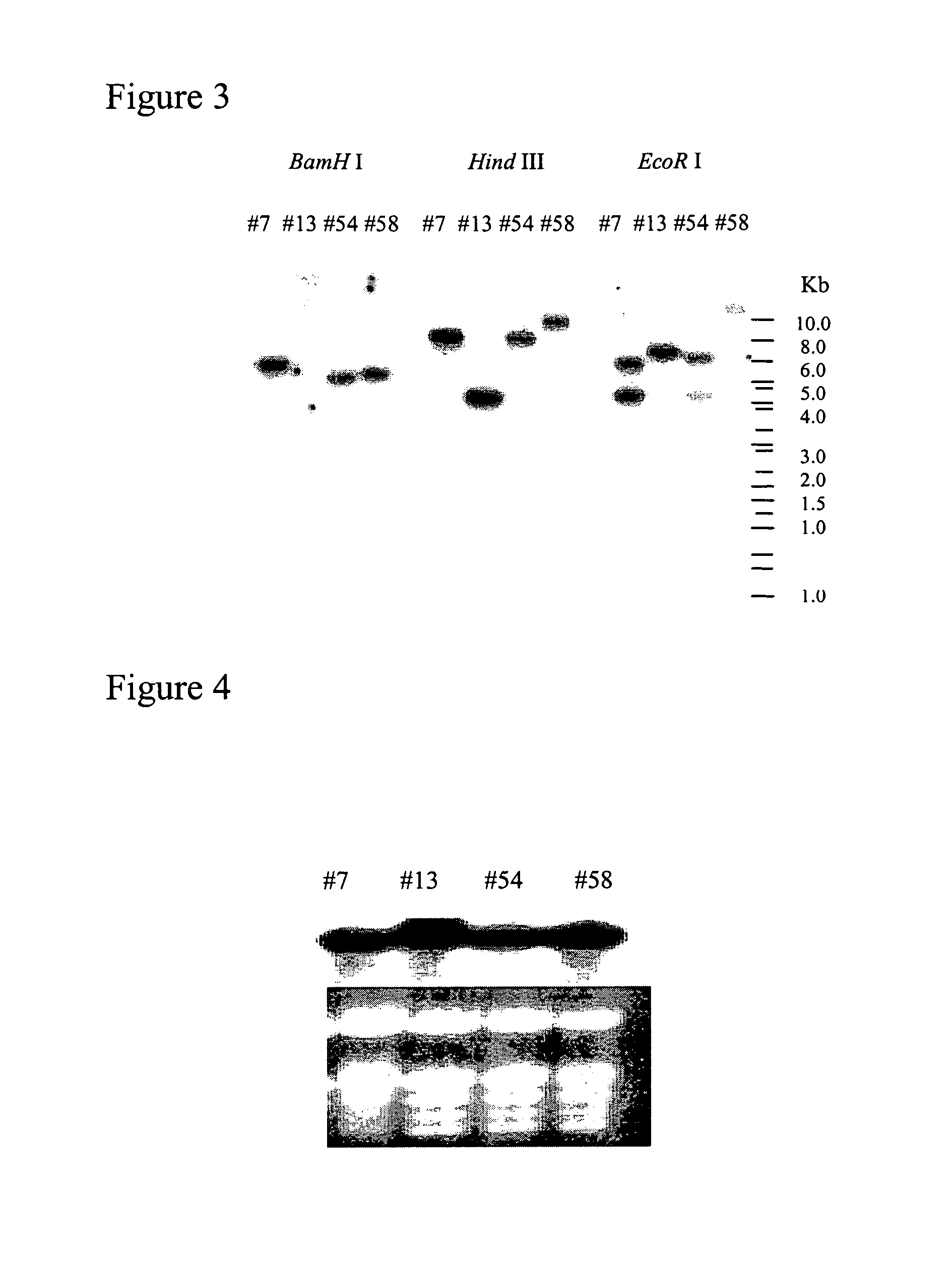Transgenic manipulation of sn-glycerol-3-phosphate and glycerol production with a feedback defective glycerol-3-phosphate dehydrogenese gene
a glycerol dehydrogenese and transgenic technology, applied in the field of plant genetic engineering, can solve problems such as defective growth under anaerobic conditions, and achieve the effect of enhancing the production of glycerol and/or glycerol-3-phospha
- Summary
- Abstract
- Description
- Claims
- Application Information
AI Technical Summary
Benefits of technology
Problems solved by technology
Method used
Image
Examples
specific embodiments
a. Molecular Biological Techniques
[0055]For a general description of some of the techniques used, see Ausebel et al Current protocols in Molecular Biology, Vols. 1, 2, 3, (1995) New York: Wiley, incorporated herein by reference.
b. Identification of the Point Mutation of the gpsA2FR gene from Escherichia coli Strain BB26R.
[0056]In order to investigate the structure of the gpsA2FR gene, the inventors synthesized two primers, TTAGTGGCTGCTGCGCTC (GPSA3, SEQ ID NO:3) and AACAATGAACCAACGTAA (GPSA5, SEQ ID NO:4), complementary to the sequences corresponding to the 3′ and 5′ end of the gpsA gene, respectively. PCR amplifications were performed with template DNA isolated from wild-type E. coli K12 and from strain BB26R, respectively. The BB26R strain harboring the gpsA2FR allele can be obtained according to Cronan et al. The PCR products were purified with QIAquick™ PCR purification Kit (Qiagen™) and fully sequenced. The sequences of gpsA (wild-type) and gpsA2FR (mutant) were compared throug...
PUM
| Property | Measurement | Unit |
|---|---|---|
| Stress optical coefficient | aaaaa | aaaaa |
Abstract
Description
Claims
Application Information
 Login to View More
Login to View More - R&D
- Intellectual Property
- Life Sciences
- Materials
- Tech Scout
- Unparalleled Data Quality
- Higher Quality Content
- 60% Fewer Hallucinations
Browse by: Latest US Patents, China's latest patents, Technical Efficacy Thesaurus, Application Domain, Technology Topic, Popular Technical Reports.
© 2025 PatSnap. All rights reserved.Legal|Privacy policy|Modern Slavery Act Transparency Statement|Sitemap|About US| Contact US: help@patsnap.com



